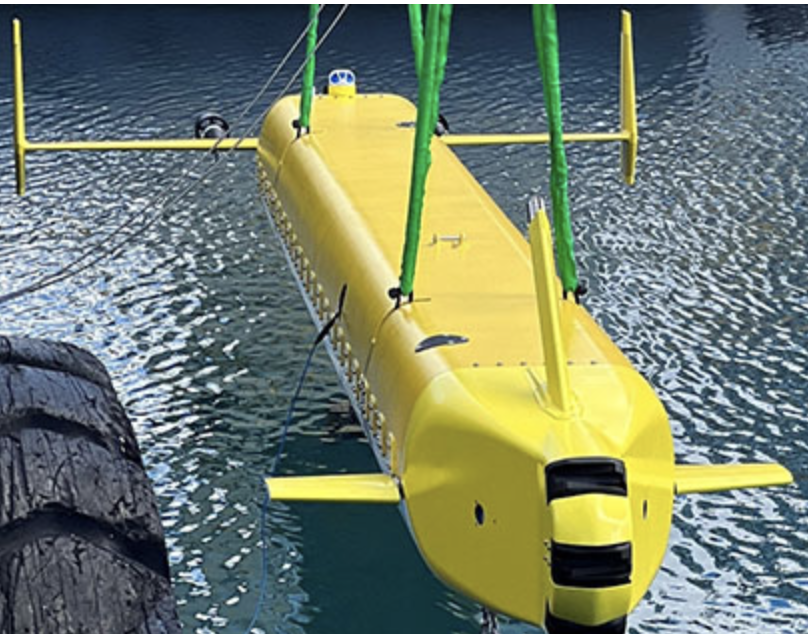(:notitlegroup:)
@inproceedings{sternlicht2016,
title = {Advanced sonar technologies for high clearance rate mine countermeasures},
booktitle = {OCEANS 2016 MTS/IEEE Monterey},
author = {Daniel D. Sternlicht and Jose E. Fernandez and James L. Prater and Joshua N.
Weaver and Jason C. Isaacs and Thomas C. Montgomery and Charles M. Loeffler
and Michael Purcell},
pages = {1-8},
month = {September},
year = {2016},
keywords = {radar resolution;sonar;synthetic aperture radar;AUV;LC-SAS;SSAM III;acoustic
spectroscopy;advanced sonar technologies;autonomous undersea vehicles;high
clearance rate mine countermeasures;high-resolution imaging;lightweight
conformal SAS;small synthetic aperture minehunter;target analysis;wideband
synthetic aperture sonar systems;Acoustics;Apertures;Imaging;Synthetic
aperture sonar;Target recognition;Vehicles;ATR;AUV;Automatic Target
Recognition;Autonomous Undersea Vehicle;Autonomy;Change Detection;MCM;Mine
Countermeasures;SAS;Side Scan Sonar;Synthetic Aperture Sonar},
abstract = {During 2014-2016 the office of Naval Research fielded two new wideband
synthetic aperture sonar (SAS) systems: the third generation of the Small
Synthetic Aperture Minehunter (SSAM III) and the Lightweight Conformal SAS
(LC-SAS). These systems, collaboratively developed by the Naval Surface
Warfare Center Panama City Division, the Applied Research Laboratory at Penn
State University, and the Applied Research Laboratories at the University of
Texas, were integrated on to REMUS 600 autonomous undersea vehicles (AUV)
developed by the Woods Hole Oceanographic Institution. Designed to increase
area coverage rate and reduce false contact calls, both systems operate over a
wide range of wavelengths and aspects: where centimeter-scale wavelengths are
used for fine-detail imaging of the seabed and small objects that lay proud on
it, and longer wavelengths, which can propagate deeper into the sediment
volume, are used for imaging and spectroscopic analysis of proud and buried
objects. The SSAM III is the first multi-band sonar that combines techniques
for high-resolution imaging and target analysis via acoustic spectroscopy. The
LC-SAS is a dual-band sensor that represents the longest (and thus longest
range) SAS incorporated on a lightweight AUV to date, and marks the first time
that a SAS has been integrated onto such a platform with a high-quality
forward look sonar - in this case the Autonomous Topographic & Large Area
Survey (ATLAS) sonar. The SSAM III and LC-SAS systems are reviewed, along with
associated technologies and sensor modalities, which include image and
spectral based processing, tomographic imaging, automated target recognition
and seabed changed detection, and advanced autonomy via situational awareness
provided by the sensors.}}
